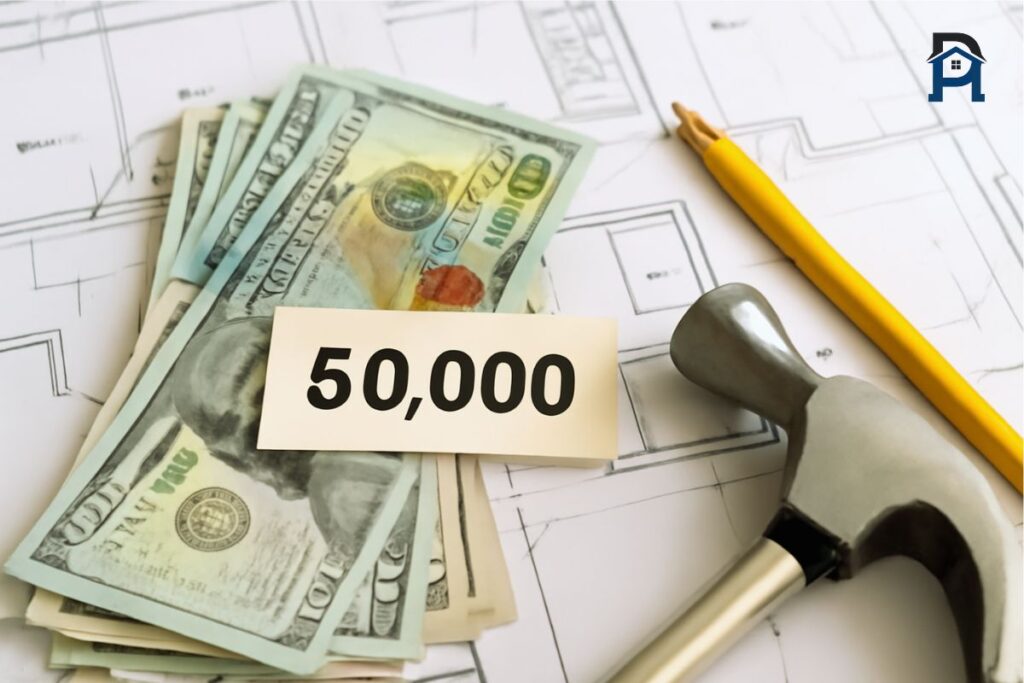I remember the first time I looked at my kitchen and thought about a full remodel. My home needed a boost, but I didn’t know what that would really entail. I didn’t know what to expect, what would actually happen, or even how to begin. If you intend to take the DIY route, trust me, you need clear understanding of the process and its importance. I tried going solo, but I quickly realized I had to call for help and bring in professional services like plumbing. That was honestly one of the easiest ways to avoid mistakes.
The majority of people usually hand over the responsibility to professionals. That means following pre-construction steps like locating, vetting, and hiring designers and contractors, or maybe choosing a design-build firm that handles the design and construction phases together. I found that being knowledgeable about the right plan and how to schedule activities around the work I couldn’t undertake myself made the entire run so much better. When you decide to let go and hand things over, the process flows in a manageable way.
There is also a common order of events in any major kitchen remodel, sometimes involving a total gutting, while a minor one has fewer steps. What you change and what you keep really makes the difference. Every project is unique, and sometimes a remodeler may have a reason to deviate slightly from the steps listed below. Keep in mind that the process involves many factors and often depends on your choices. The good part is you always learn something new each time.
Mission Statement
Our goal is to provide clear, reliable, and experience-based guidance on when remodeling a kitchen what comes first. Every detail in this article is built on industry knowledge, personal insights, and verified best practices. We prioritize accuracy by reviewing current remodeling standards and fact-checking information before sharing it with our readers. This ensures you can trust the steps, tips, and recommendations provided here to help you make confident decisions for your own project.
1. Planning
Define the scope
The first real step in any remodeling journey, especially a kitchen, is deciding what you want to achieve with the remodel. I sat down and thought about what needed to be changed, what could be updated, and whether the layout, appliances, or finishes were good enough. For example, I had to look at my current setup and ask if I should change the entire space or just a part of it.
I listed out the problems I wanted to fix and the things I had always dreamed of adding—like a certain style of cabinets, a big island, or even a chef’s stove. Once I was determined to see exactly how my new space should look and how it should function, I started moving forward with my plans.
I noted down all my needs, what I like, and what I would always want in a kitchen. It helped me move in the right direction without second-guessing the choices.
Budget
The cost of kitchen remodels can range widely, and so many factors affect it. Setting a clear budget is the key point. If you don’t, it can force you to live on PBJs for years—I’ve seen that happen. To avoid this, I went through a Design Agreement process that helped me determine the scope of work.
We sat down to discuss design, products, and materials. This step gave me help in making sure my choices matched my vision. There are always multiple ways to set things, but once the numbers were clear, I knew what came next.
Design
I had to develop a detailed design plan, including clear measurements, material options, and choices for every appliance. Writing down the specifications made everything easier to track and visualize.
Timeline
I had to create a realistic timeline for the project, considering all potential delays with material supply and lead times. Keeping this in mind helped me stay prepared.
2. Demolition and Rough-in
Tear Out and Demolition
The first big step in a kitchen remodel is the tear out and demolition. This is when you create the base for a beautiful new space. You demolish and get rid of the outdated and worn parts, then rip out what you don’t want to keep—like walls, cabinetry, flooring, or fixtures. Many property owners try handling this phase themselves, but some prefer to hire a licensed contractor to complete the work. Experienced teams with the right knowledge help avoid damaging plumbing or hitting pipes hidden behind or beneath cabinets. Being ready is important, and while some enjoy the task, it is often best to save time and let the pros do it. They possess the skills to keep it safe.
If you do attempt to handle this part yourself, make sure to turn off the water before starting. A good idea is to have a plan for the remnants, like a dumpster or trailer for hauling the debris away. Being off track here can cause trouble, so prepare well and do it the good way.
Rough-In Work Including Framing and Plumbing
The next stage in a kitchen remodel is the sequence of completion called rough-in work, where framing and plumbing are handled. This step focuses on the walls and what goes inside them, and I always think of it as the backbone of the remodel.
In some cases, the stage is simple, like moving framing in the walls around a center island. But in large remodel projects, it may mean shifting plumbing fixtures several feet from where they were originally sat, or even adding square footage to the space by pouring concrete for an expansion. This step is often time-consuming and usually best left to a professional construction crew. A new layout built around these changes can completely transform the flow. If I had tried it myself, I’d probably have been left confused—it really can mean the difference between smooth progress and major delays.
3. Inspection and Hire Contractor
Professional Inspection
Once the rough-in work is finished, the next part is a professional inspection. In many cases, this requires calling the city or county and scheduling an appointment. Some areas may even ask for a small fee to be involved. Most of the time, it’s simply a formality, but it’s a must.
If you’ve followed the applicable building codes for your jurisdiction, there shouldn’t be a problem. You just move to the next step. If you fail, you learn from the mistakes. It’s part of the process, and honestly, you shouldn’t stress too much—it’s all about getting it right.
Hire a Contractor
When I hired a professional contractor, they knew how to handle the inspection and the steps needed to fix any errors. Trying to do it all by yourself can be tough, especially if you don’t pass the first round. A good idea is to call a licensed pro for help.
They can guide the process, do the hard parts themselves, and reach that ultimate goal—getting approval. It gives you peace of mind to just keep things moving forward, and that’s usually the best way.
4. Time To Installation
Finishing the Walls
After the renovation project passes inspection, it’s time to finish the walls. I had to hang, tape, and complete the drywall as part of my plan. In my kitchen, this even includes a small countertop bar section. If you’re not skilled in this area, consider hiring a contractor, since the process can be tricky but absolutely necessary. Doing it right and according to plan saves so much trouble later.
An optimum step here is to add a coat of primer to the drywall, even if the paint comes later. The primer seals the facing paper and protects against scuffs and scrapes. When installing other items in the room, accidents can easily happen—especially when moving bulky cabinetry or appliances into the space. Taking this step keeps the shape of the room intact, adds a splash of your favorite color when you’re ready, and makes the whole renovation process feel great, even though it takes some patience.
Install Doors and Windows
After the drywall, it was time to install the doors and windows. In my old kitchen, the structure was fine, so this step was just to wipe things down with a cleaner, seal small cracks with caulking, and insulate effectively. Sometimes sticking with the existing ones can actually help, and it’s a good choice if you simply want to save money.
When adding new doors and windows to the space, make sure to insulate them properly. The majority of home energy cost each year comes from lost hot or cold air. Unsealed kitchen frames not only affect how comfortable the room feels, but they can also drain dollars in heating and cooling bills.
I also had trim installed before cabinet installation, and that made it more exact. Failure to do this has the potential to create gaps and future problems in the renovation timeline. Always ensure it’s done right, or it could cause bigger issues further along than you want.
Time for Cabinets and Plumbing Fixtures
The next step in my renovation process was the installation of cabinets and plumbing fixtures. This is the time when the new countertops also come in. In many cases, this part feels fun because the project really starts to take shape. Seeing it move toward the end with everything in sight felt rewarding. I could imagine the spacious farmhouse sink I had my eye on for months, and when it made its grand appearance in my renovated space, I was finally able to clearly see my vision making sense.
Some examples of items I focused on adding in the kitchen at this time were the sink, faucet, and garbage disposal. With every upgrade, minor plumbing issues would reveal themselves. When that happened, I had to contact a skilled professional for advice and help. It was necessary to include that kind of support, since not everything I need could be handled by me themselves.
Countertops
For me, the template step was important before the install of the countertops. Making sure they fit over the cabinets in the right place gave the kitchen its final touch.
Bring in New Appliances
After the installation of cabinets, plumbing, and fixtures, it was time to bring in the appliances. This includes all the items like the microwave, stove, and refrigerator. I even thought about some luxury touches such as a wine chiller or a water filtration system. These installations really add comfort and style to the kitchen, and when you complete this stage, the space feels truly new with built-in upgrades.
At this point in the process, the new kitchen began to take shape. My professional contractor had a checklist and a timeline to determine when the project would be complete. If you’re attempting it yourself, it helps to make a list of outstanding tasks and keep them on track. I stayed working closely with my team for help to keep everything smooth. I would sit down often, starting with the right notes to make sure nothing was missed, and most likely, that’s why it turned out so well.
Install New Flooring
Finally, it was time to install the new flooring. This step can be a bit contested among home renovation professionals. Some prefer to handle tile or wood installation before cabinetry, while others save it for the last part of the project. The decision often depends on the basis of the work, and many will opt for what they feel works best. I noticed that many people see this as a tricky bit, but it really comes down to planning.
Since I had waited until the end, this was the optimum time to install the flooring. I got to select the colors and styles that would match my unique taste and style. With so many options on the market—vinyl, ceramic, or wood plank—there was something for every space. Choosing the right design gave my bathroom an appeal that felt completely different and fresh.
Backsplash
I decided to install a backsplash with tiles as one of the final touches. These finishing materials added character to the room, and no other detail pulled the design together quite like this.
Final Touches
The last stage was to install the lighting fixtures, add paint to the walls, and complete the remaining tasks. These details pulled everything together and gave the space its finished look.
5. Final Inspections
Verify Compliance
I had to ensure all the work meets the local building codes and safety standards. This step gave me peace of mind that everything was done right.
Final Walkthrough
I made sure to conduct a final walkthrough to identify any remaining issues or small touch-ups that were needed before calling it complete.
By following the order, I could ensure everything stayed smooth and efficient. My kitchen remodel turned out better by minimizing potential problems and maximizing the impact of the new space.
Celebrate Your New Kitchen
Congratulations — the renovation project is complete. It’s the perfect time to sit back and celebrate your beautiful, new kitchen. Pour a glass of wine, cook a favorite meal, and invite friends to share the moment.
No matter if you handled it alone or hired a professional contractor, now you have a place to make lasting memories and truly enjoy the results.
Disclaimer:
This article is for general informational purposes only and should not be taken as professional or construction advice. Actual remodeling results, costs, and timelines may vary depending on your home and project scope. For specific guidance, always consult a qualified professional.

I’m Bilal, the founder of Dwellify Home. With 6 years of practical experience in home remodeling, interior design, and décor consulting, I help people transform their spaces with simple, effective, and affordable ideas. I specialize in offering real-world tips, step-by-step guides, and product recommendations that make home improvement easier and more enjoyable. My mission is to empower homeowners and renters to create functional, beautiful spaces—one thoughtful update at a time.




